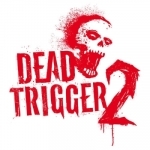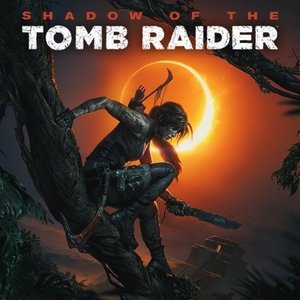
DEAD TRIGGER 2: FIRST PERSON ZOMBIE SHOOTER GAME
Games and Entertainment
App
BEST MOBILE ZOMBIE SHOOTER EVER * App Store - Best of 2013* * 50 Million survivors from all over the...

How to Play Soccer - Soccer Training Guide
Sports and Entertainment
App
*SALE* How to Play Soccer App Special Offer. 50% Off TODAY. Buy Now Before Price Goes Back Up! Now...
Daniel Boyd (1066 KP) rated Metal Gear Solid V: The Phantom Pain in Video Games
Nov 2, 2017 (Updated Nov 2, 2017)
The way that this game is structured is awful. You play a few main missions in a row, the story is beginning to hook you, but then OCD kicks in and you realise that you have 4 or 5 side missions building up to be completed, so you go and do them, but then you come back to the main story and forget what was going on in the last mission, but who cares when you can Fulton a goat, right?
The writing in this game is possibly the laziest it’s ever been, one example of this is the ‘controversial’ character known as Quiet. This character has been masterly debated over a lot (see what I did there?) and thrown more gasoline on the fire that is the over-sexualisation of women in video games. My stance on it is somewhere in between, the reason for her lack of clothes and speech is silly, however she is running around Afghanistan and Africa, which are very hot countries, so really they could have put her in a bikini top and a pair of cargo pants and I doubt anyone would have batted an eyelid. Now, the Metal Gear series has always been known for its odd Japanese perviness, but when it is a main character that has been sexualised, it’s always been for a justified narrative reason, such as EVA in MGS3 walking about with the front of her jacket unzipped showing off her bikini clad chest, but the whole point of her mission in that game, was to seduce Snake, so it made sense within the context of the story, in this game the reason for Quiet’s over exposure is much lazier and feels tacked on as a cheap excuse.
The worst part about all of this is the fact that, this is it, Kojima’s definite last Metal Gear game, there is no going back to redeem anything, like in MGS2 when everyone hated it, but because 4 solved some of the problems that were created in 2 people are now okay with 2, that can’t happen with this game because Kojima and Konami are no more. Now I could write a whole other paper on Konami vs Kojima and my stance on it but this is the jist, Kojima was spending too much money and taking too much time with this game, Konami demanded he finish it so they can make their money and add their microtransaction’s etc Kojima told them where they can stick it and the partnership was dead. This has had an effect on the game, there is clearly content missing, Konami has confirmed that at least one mission was cut, where Snake would have went to Africa to have another battle with Eli and Sahalanthropus, which is the Metal Gear in this game, which is unacceptable really. Also, I assume there was a lot of other content that was cut that we weren’t told about. Sahalanthropus is another problem I have, how is it that this Metal Gear created in the 80’s is more advanced than REX, which was created in the early 2000’s. Also, when you fight Sahalanthropus, there is no one in the thing, it is an empty robot being controlled by Mantis, who floats beside the giant mech. That is actually a decent metaphor for the lack of villains in this game. Skull Face is hardly in the game and his eventual death, like every other significant event in this game, just kind of happens with no build up and packing little punch. The team of bosses in the original Metal Gear, headed up by Liquid and Ocelot, were probably the best team of villains in any game ever, since then the bosses have gone slowly downhill. The Sons of Big Boss were great, Dead Cell were pretty cool, The Cobras were okay, The Beauty & The Beast Corps were pretty lame and The Skulls in this game are emotionless zombies who don’t even have individual names and Skull Face is such a disappointing antagonist, he is hardly in the main game and then he shows up at the end, gives some silly speech that we have heard before in the trailers and then just dies, no boss fight or anything. Also, no customisable Metal Gear, which I feel like is a huge missed opportunity and no Sims like Motherbase customisation, interior or exterior.
David Hayter was missed in this game, Keifer was fine on the rare occasion he did speak, but the phantom Snake twist was the perfect opportunity to reintroduce Hayter’s voice and they didn’t take it. Also no Campbell or EVA, not even a reference. And it is never explained why the last time we see the real Big Boss, he is rescuing a child and a young girl and the next time we see him he has become modern day Hitler. Ultimately, this game just makes me sad, it is hard not to focus on the fallout from the Konima debacle, P.T/Silent Hills is no more, that promisingly terrifying demo we were teased with will amount to nothing and this game is all we will ever get again in terms of the Metal Gear saga. This is the end of an era, and it’s an end that doesn’t sit perfectly with me.
Purple Phoenix Games (2266 KP) rated The Road to Canterbury in Tabletop Games
Oct 4, 2021
The Road To Canterbury is a game of medieval hand management and area influence. In it players are false pardoners stalking the road to the city of Canterbury as pilgrims make their way there from London. As their companies run across these pardoners, they are offered the chance to purchase pardons – salvation and forgiveness for their sins. However, these pardoners are also keen to help the pilgrims along the path of sin, thus making their faux pardons worth even more money! The pardoner who ends the game with the most money will win along The Road to Canterbury.
DISCLAIMER: We were provided a copy of the Impoverished Pilgrim Edition (2nd edition) game for the purposes of this review. This is a retail copy of the game, so what you see in these photos is exactly what would be received in your box. I do not intend to cover every single rule included in the rulebook, but will describe the overall game flow and major rule set so that our readers may get a sense of how the game plays. For more in depth rules, you may purchase a copy online or from your FLGS. -T
To setup, follow the rulebook, as there are many components to track. The main areas are the Circle of Sin mat that holds the Parson pawn, the decks area that hold the various decks of cards from which players will be drawing, and each player’s personal area where players will hide their earnings and hand of cards behind the privacy screen. Once all is setup somewhat correctly, it should look similar to the photo below. Warning: When I set this up and took the photo, I neglected to realize the red company and the map tiles were translated to the wrong spaces, so just switch those.
The Road to Canterbury is a game of rounds, and each round players will be taking similar steps: Play One Card, Redraw, Perform a Reckoning of Sin. Players will have access to three different types of cards that can be played during the Play One Card phase: Sin cards (five of which are dealt at setup), Pardon cards, and Relic cards. During this phase, the active player can play a Sin card to one of the active Pilgrims to tempt them towards committing that sin. The first time the player adds a Sin card to a Pilgrim, they place one of their corruption cubes on the matching sin on the Circle of Sin. Alternatively, they may play a powerful Relic card that offers adjustments to the rules, or has some interesting results. When a player feels that enough Sin cards of a specific type have been played on a Pilgrim, they may opt to play a matching Pardon card in order to gain precious coin to their pockets. Each Pardon card essentially pardons ALL the sins of that type on the Pilgrim, and the player then collects coins exponentially for a larger total of matching Sin cards on that Pilgrim. If the Parson is currently sitting on the matching sin, the pardoner receives extra coin for it being an especially egregious sin in the eyes of the church. Each time the Pilgrim is pardoned, the pardoner places one of their corruption cubes upon the Pilgrim.
After the active player has played their card, they must Redraw their hand back to five cards, choosing to draw from the Sin, Pardon, or Relic offerings. Some Sin cards may be drawn that are Death Approaches cards. When these surface, they are immediately attached to the Pilgrim whose color matches that of the drawn card’s border color. This essentially eats up a slot on the Pilgrim that could be used for a Sin card to be pardoned.
Once the player has redrawn cards to their hand they must next Perform a Reckoning of Sin. The active player assesses each active Pilgrim to see if they have seven or more cards attached to them. If so, that Pilgrim will perish from the “deadly” sins. Whichever player has placed the most number of corruption cubes upon the Pilgrim is considered present at time of death and will receive credit for the sending to the heavens. They move one of the cubes upon the Pilgrim to the first space on the map tile, earning bonus points and a Last Rites token. Last Rites may be performed immediately to take another turn, or may be held until the end of the game for a 3 VP bonus per token. The most interesting aspect of a Pilgrim dying is the fact that their card now becomes a permanent placeholder underneath their company’s colored banner. So the next Pilgrim to enter play for that company will need only six additional cards to kick the bucket, and so on.
Play continues in this fashion of players taking turns through their three phases. The game ends when all the spaces on the map tile are filled with cubes. Bonus points are counted, coins are added, and the player with the most money/highest score is the winner! The best temptress and pardoner this side of Yorkshire!
Components. I have no experience with the first edition of The Road to Canterbury, so unfortunately I cannot compare and contrast components. However, I have seen many photos and even checked out a review video or two. What I can say about components is that this edition has refreshed the look of nearly everything, and so much for the better. Instead of boring plain cards, there’s just a little more decoration. Not so much to be invasive or distracting, but very tasteful. The component quality throughout is quite stellar. There’s a lot of cardboard in this box, and it all looks and feels great. I do quite like the art style, even though it’s all medievall-y and too artsy for my normal preference. All in all a great quality box of game.
So like I said, I have no experience with this game prior to receiving it and playing through it now. It certainly doesn’t feel like a 10-year-old game, nor does it really feel like many of the Alf Seegert games I have played in the past. Neither of these points are bad at all, just some thoughts I had.
It should be obvious by my ratings graphic that I dig this game a lot. I have nothing like it in my collection, and I am super excited to really bring this out with different types of gamers to see how it fares (once the COVID is no longer an issue, of course). I see this being a hit with my family, who enjoys a lot of take that style games. I see this being a hit with my more thinky gamer friends, because there are just so many juicy choices to be had every turn. I can see this even being a hit with my more gateway friends, because it isn’t terribly heavy, has some humor in it, and I can see the prospect of sowing sin and killing off innocent Pilgrims being attractive to some of my more morbid friends.
For me, I love the ability to take every turn and make important decisions. I try to make every turn meaningful to my agenda, but tactical with what may be at my disposal at the time. When should I play this Relic? Why is named something ridiculous? Should I wait a while longer to pardon this sin, or should I pile on another and then pardon next turn? Ooh, but what if my opponent has the same Pardon card. Am I truly happy that this poor Wife of Bath is about to kick it? GAAHHHHH!
Now it’s no secret that I am a big fan of Dr. Seegert’s games, as I have previously reviewed Fantastiqa and Haven with very high ratings. So, I was not at all surprised that I would love this one as well. It offers so many great choices, looks great on the table, fills a unique void that was present in my collection, and can be played with various types of gamers, even though it is designed for two or three players total. Purple Phoenix Games gives this one an unapologetic 5 / 6. I don’t think it will break into my Top 10, but I certainly won’t rule it out quite yet. More plays with different types of gamers may change my mind on that statement, and I eagerly await my plateful of crow. So if you are like me in your gaming preferences, check out this version of The Road to Canterbury. Let me know how often you tend to grab Relics too, because I feel like I need to utilize them more, but it is so hard to pass up a Sin or Pardon. I Lust after them so very badly.
Gareth von Kallenbach (980 KP) rated the PC version of Shadow Of The Tomb Raider in Video Games
Aug 14, 2019
Shadow of the Tomb Raider is the third installment in the reboot of the franchise. Lara is no longer a naïve, explorer in training, who struggles with the idea, much less the actual action, of killing a human being. The years have made her a more seasoned (and possibly more ruthless) tomb raider, and she has now blossomed into the badass character that she is known for. Her adventures will take her deep into Mexico and South America, where she is trying to stop the apocalypse that she had accidently set in motion when she acquired an ancient dagger. What follows is roughly a 12+ hour main story and several hours’ worth of side missions that help flesh out the story and the world around her. The best part is that the story has all the excitement and thrills you would get if you took an Indiana Jones movie and added some of the Mel Gibson drama Apocalypto, so buckle up and enjoy the ride.
Shadow of the Tomb Raider adds the social interaction that was largely missing in the previous installments. While there are still plenty of times when Lara will be out on her own, searching through ruins or trekking through the jungle, there are now several civilizations that Lara will be interacting with. Her adventures will take her to the ancient city of Paititi, where most of her interactions will be with the locals and the main antagonists to the trilogy, Trinity. It’s in the interactions where we really get to see Lara question not only her beliefs but also her actions when acquiring ancient artifacts. Many of the discussions revolve around what will happen if outsiders come and try to change their standard of living or force their own wills on the natives. These discussions cause Lara to reevaluate what she does for a living, and how her own actions have an impact far greater than she even realizes. The inclusion of so much interaction with other people brings a whole new dimension to the Tomb Raider world and it entrenches you in the story in a way that battling even the most dangerous tombs never could.
One of the most interesting levels in the game takes you back in time to when Lara was just a young girl. You get the opportunity to experience the world through the innocence of a child, and her own imagination as she explores her father’s mansion. It provides an interesting look into the events that would unfold during her impressionable years, and also helps to offer some additional insight into what drives her as an adult. It’s in this level, where you finally understand what fuels her desire and continues to push her forward.
Gameplay is largely the same as the previous titles, but they did add a few new interesting ways to traverse some of the more difficult terrain, such as the ability to rappel down cliffs or using a pick axe to traverse cave ceilings. Climbing, jumping and swinging are all handled very intuitively using the controller. Yes, there were times where I felt I was doing the right thing and fell to my death anyway, but at no time did I feel overly frustrated or blame the tight controls for my own missteps.
Swimming and diving play a far bigger role in Shadow than in the previous games. Long, deep caverns will require you to swim and find pockets of air to keep from drowning. There are even a few sequences where you will need to swim through plants to avoid the various eels and piranha that will kill you, and swimming through the plants is just as easy as it sounds. Thankfully I never felt these sequences played on for too long and they certainly added diversity to the levels. While generally swimming and diving in video games tend to be an exercise in frustration, I never felt that was the case here.
Stealth also plays a bigger role in this game and adds another key to your survival. The original 1996 game focused on your dual pistol wielding abilities to get you out of jams and in this game, you are rewarded with a subtler approach. Taking a nod from games such as Horizon Zero Dawn, you will now have plenty of opportunities for Lara to crouch in large grassy fields or cover herself in mud and hide amongst the vines and cliff walls to surprise and take down her enemies. You can now overcome many adversities utilizing only stealth, but don’t worry, if you prefer more upfront action, there are still the obligatory pistols, shotguns and machine guns you can use to dispatch foes. Stealth is just an added way to ensure that Lara saves her bullets for far bigger threats down the road.
Now for everyone’s favorite part…the tombs! What would Tomb Raider be without tombs and the challenges that come along with them? As you may have already guessed, all sorts of puzzles and booby traps await you on your journey. I found they kept a nice balance between challenging and entertaining and thankfully none of them were so obscure that you need to break out Google to overcome them. Another great addition to the game is that the player can now individually adjust the difficulty on puzzles and on combat. That means if you love combat but not the puzzles you can adjust them independently, which is something I wish far more games would take advantage of. Either way, there are plenty of challenging tombs where you can flex your tomb raiding muscles.
As your adventure progresses you will earn skill points that allow you to upgrade Lara with new abilities. There are three skill trees, each containing many different skills, where Lara can spend her points. The three trees are broken down into Seeker, Warrior and Scavenger and Lara can be upgraded when she arrives at a basecamp. A few of these upgraded skills are longer swim times, multiple stealth takedowns, and the ability to shoot two enemies simultaneously. It’s always exciting to upgrade your character and see how the gameplay changes with new your abilities. This game is no exception and the upgrades you choose can really enhance your experience.
Graphically, Lara has never looked better. I played the game on my Xbox One X in 4K and the environments were awe inspiring. The lush jungle almost jumps off the screen and the character models are some of the best I’ve seen in recent memory. Of course, all this beauty wouldn’t mean much if there were stutters and lags and thankfully I never noticed a single frame drop while playing the game in all its 4K glory. Shadow of the Tomb Raider feels like you are part of a high budget, summer blockbuster and at times it was difficult to determine the difference between a cutscene or live game play (in a “wow, this is incredible!” way). The acting was also top notch and Camilla Luddington once again does an outstanding job delivering her lines, even making some of the corniest statements endearing. Every aspect of this game is the best of the best and you will be hard pressed to find an area of the game that was lacking.
Shadow of the Tomb Raider in an amazing accomplishment and easily my favorite game of the series. I’d even go as far as saying that I enjoyed it more than Uncharted 2, which is a true testament to how much I loved this game. Not only does the story have a heart and completely engages the player but it’s thrilling and there is non-stop adventure until the very end. While this certainly could be the last game in the rebooted series, I truly hope it’s not as I already want to play another. I highly recommend picking this game up. As soon as you knock over your first pot, you will be happy that you did!
What I liked: Stunning graphics, Incredible voice acting, Blockbuster feel
What I liked less: Occasional areas where it was unclear where to go next

Yellfy Sports - Your Teams Live Scores, News
Sports and News
App
Yellfy Sports App is 5 star rated and the best sports app for scores, news, stats, live video and...

TV Assist - Play photos, videos and music to TV
Photo & Video and Entertainment
App
Play photos, videos and music from your iPhone/iPad to DLNA devices such as your Smart TV, TV Box,...

iPlayTo - Play photos, videos and music to TV
Utilities and Photo & Video
App
-------------------------------------------------------- This is the paid version of "TV Assist"...


